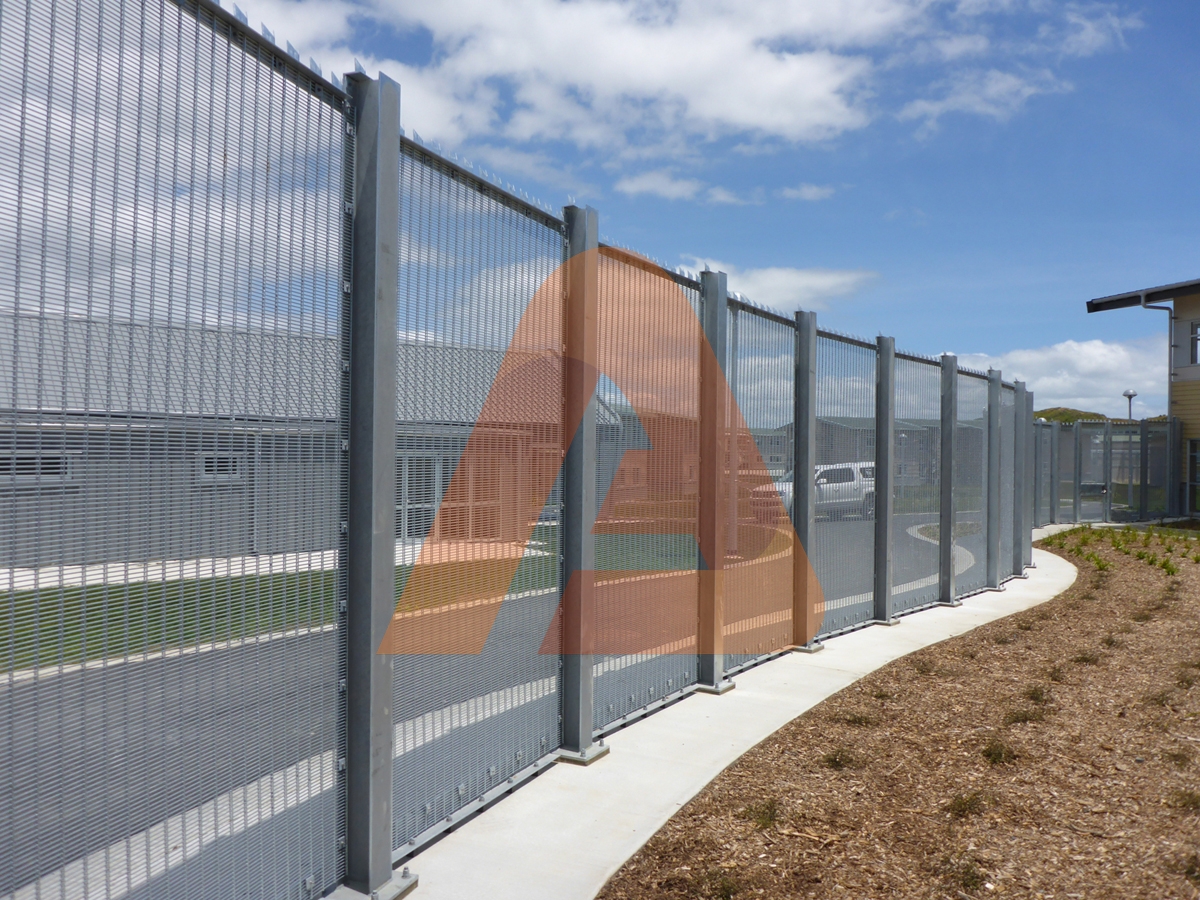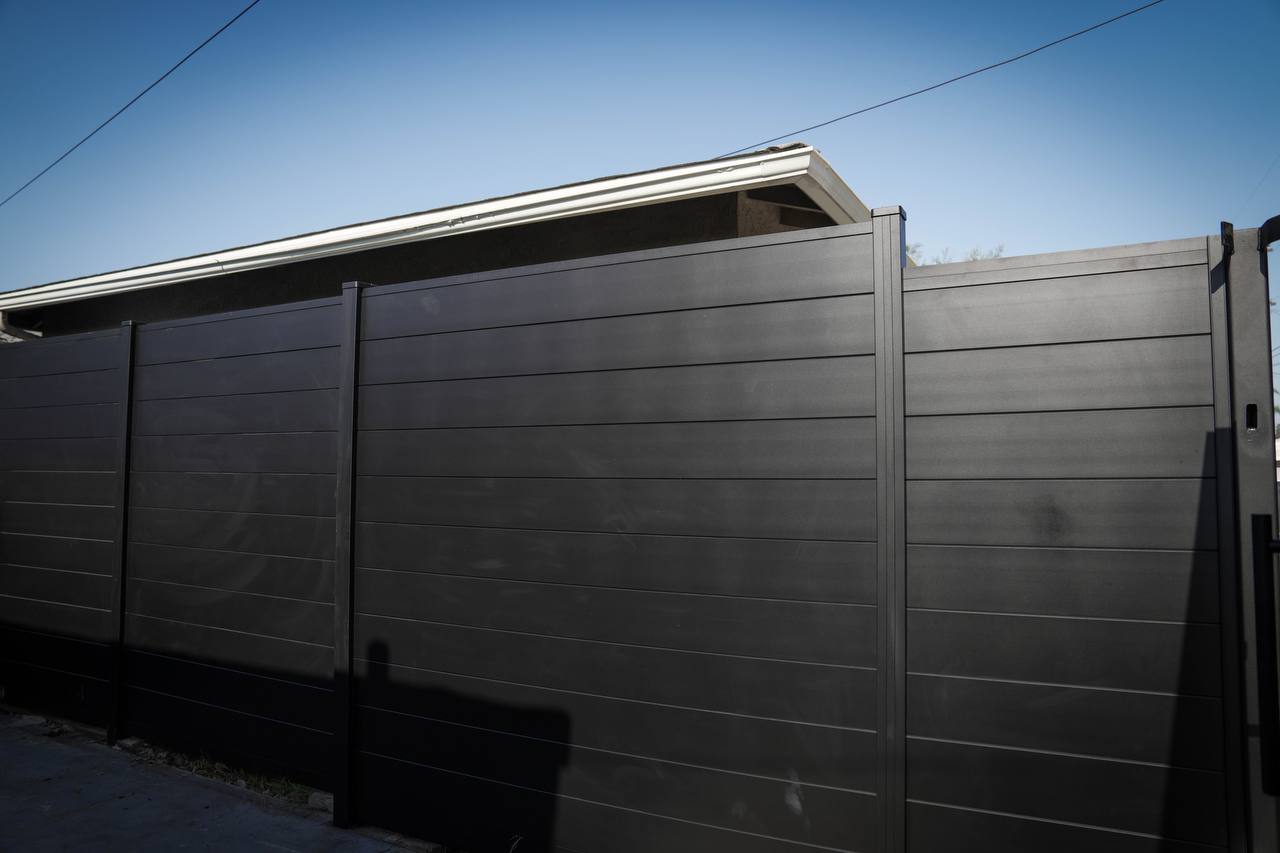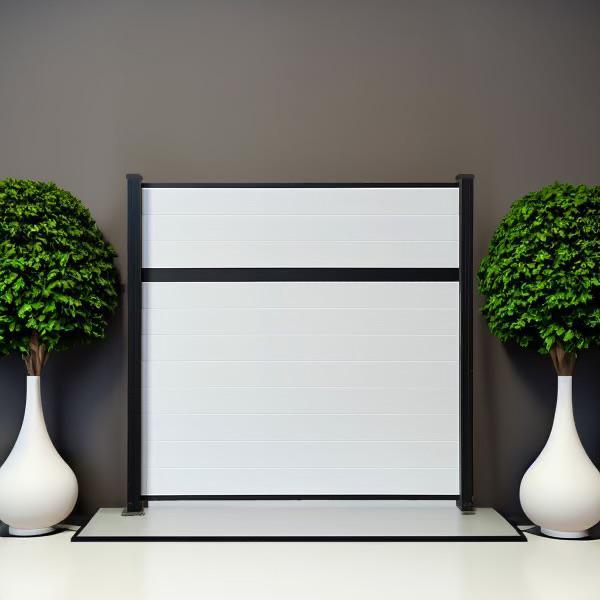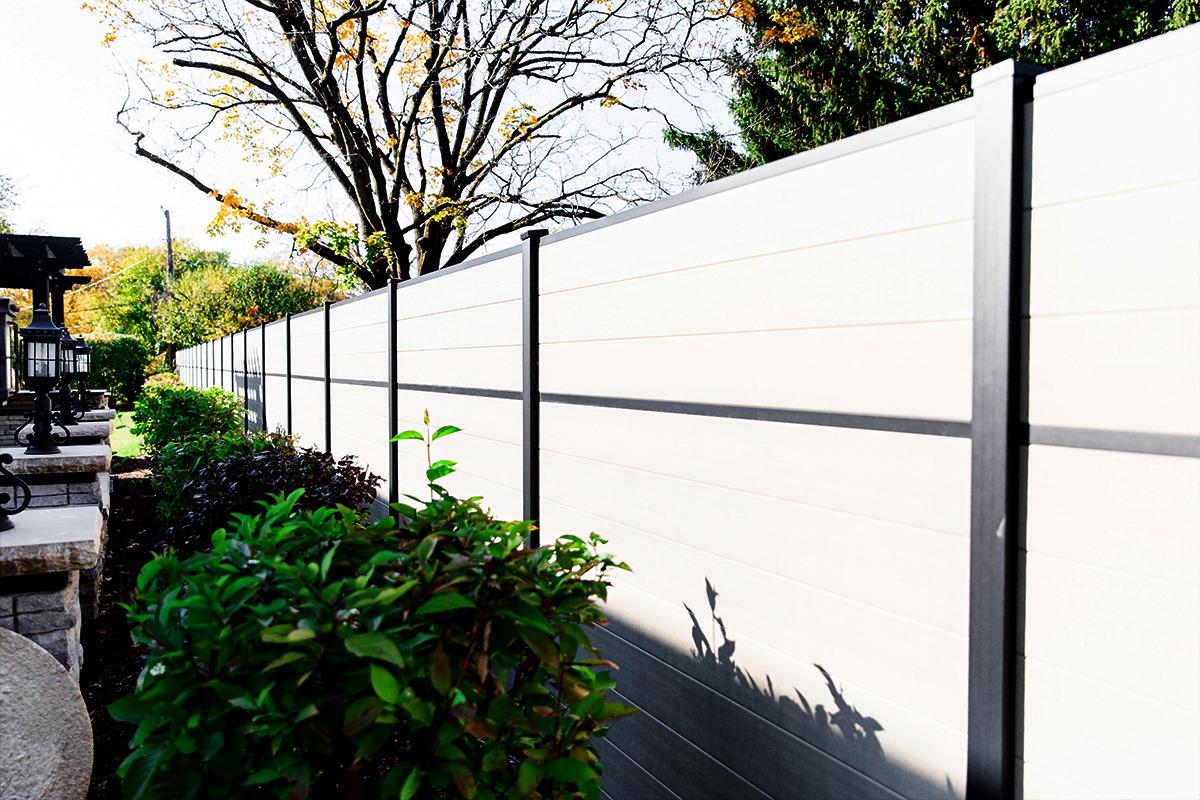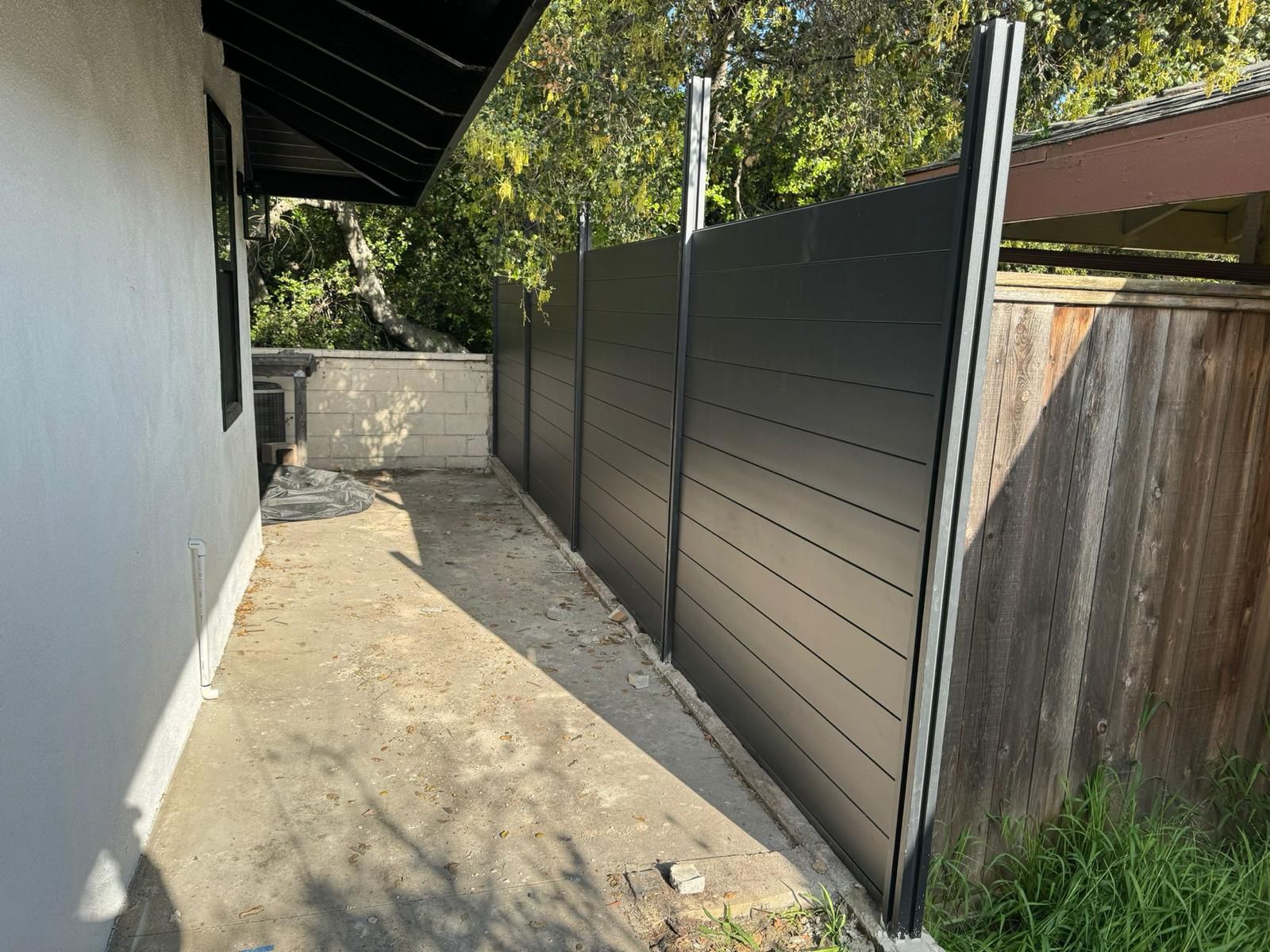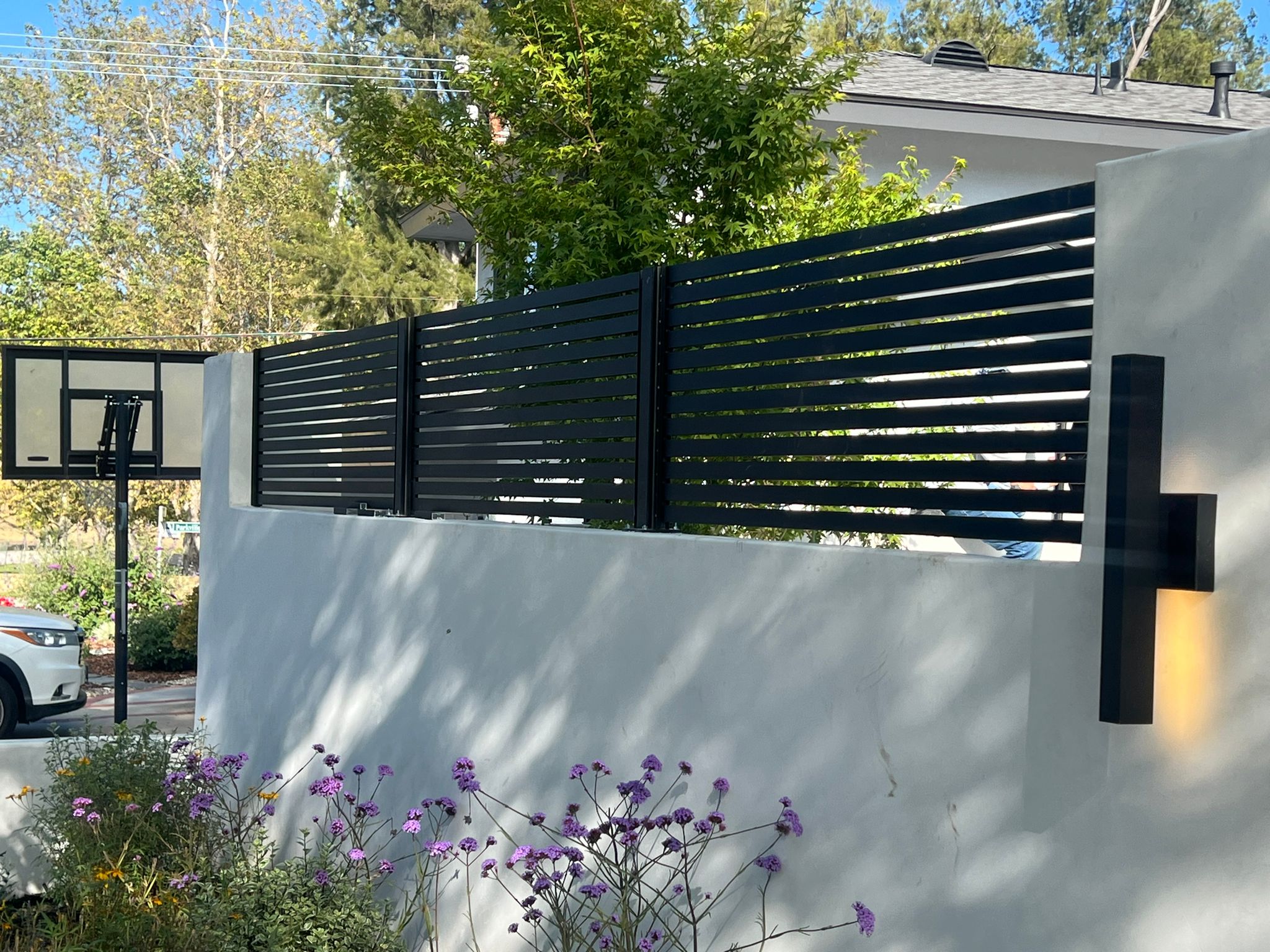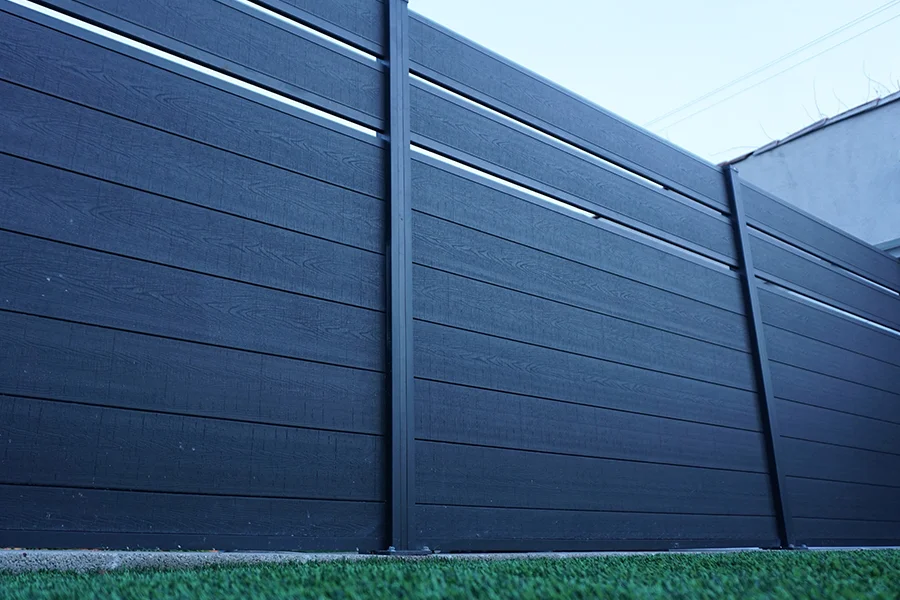
Privacy Fence Height Limits: What You Need to Know
- By Admin
- Posted on
The maximum fence height you can legally install depends on zoning laws, building codes, and local regulations. Before constructing a privacy fence, it’s essential to check specific city and county rules to avoid potential legal issues.
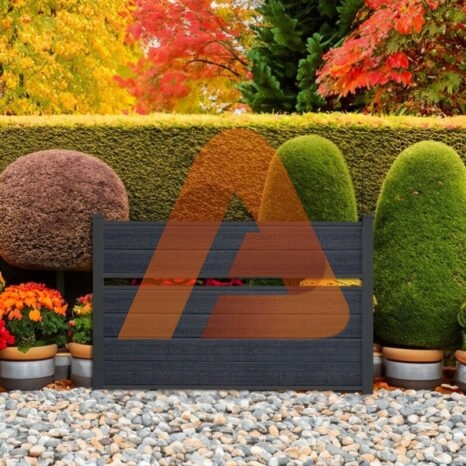
- Front Yard: 3 to 4 feet
- Backyard & Side Yard: 6 feet (sometimes up to 8 feet with a permit)
Los Angeles Privacy Fence Height Rules
Neighbor Visibility: A taller fence may block your neighbors’ views, potentially leading to disputes. Material Restrictions: Some locations regulate fence materials like wood, vinyl, and aluminum picket fences. In Orange County, fencing permits for residential properties must be submitted online via Fast Track, and only homeowners or contractors can apply. More Materials Required: Taller fences demand more posts, reinforcements, and support structures, increasing costs. Additional Support Needed: High fences require sturdier bracing to withstand wind and other environmental factors.
How High Can a Fence Be in Los Angeles?
If you’re planning to install a fence in Los Angeles, understanding the local fence height regulations is crucial. Failing to comply with city ordinances can lead to fines, required modifications, or even removal orders.
Several factors influence how tall your fence can be, including:
Zoning laws – Different neighborhoods and zoning types (residential, commercial, or industrial) have specific fence height restrictions.
Property location – Rules differ for front yards, backyards, and side yards.
Permitting requirements – Fences exceeding a certain height require a permit from the Department of Regional Planning.
Before building your fence, check with the Los Angeles Department of Building and Safety (LADBS) to ensure compliance with local codes.
Los Angeles Fence Height Limits
In Los Angeles, the maximum legal fence height depends on the property’s location:
Front Yard: Up to 3.5 feet
Backyard & Side Yard:
- Up to 8 feet (if the lot width is 40 feet or more)
- Limited to 6 feet (if the lot width is less than 40 feet)
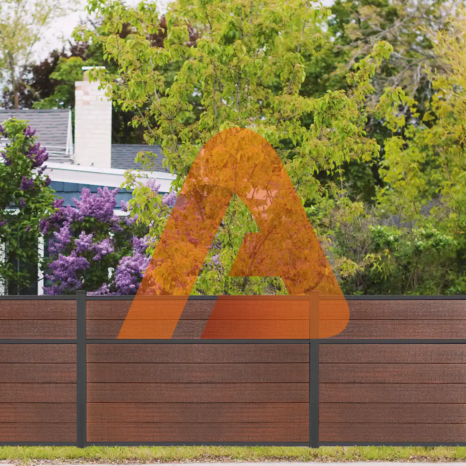
How Tall Is a Privacy Fence?
A standard privacy fence is usually 6 feet tall in the backyard and 3–4 feet tall in the front yard. That height is considered the national average because it provides enough privacy without breaking most zoning laws.
In many U.S. cities, you can install a 6-foot fence without a permit. If you want to go taller—often up to 8 feet—you’ll need special approval from your local planning department. This extra height is common in areas where homeowners want more seclusion or extra protection against wind and noise.
Keep in mind that local regulations matter. For example, places like Los Angeles or San Diego may restrict fence heights on corner lots for safety reasons, while suburban and rural areas are usually more flexible.
In short, if you’re asking “how tall is a privacy fence?” the answer is simple: most backyards allow 6 feet, front yards allow 3–4 feet, and with a permit you may be able to build up to 8 feet. Always double-check with your city or county before building.
Tips for Building a High Privacy Fence That’s Still Legal
A tall privacy fence can be both functional and stylish, but it must comply with local regulations to avoid penalties or forced removal. Understanding how to build higher fences legally is essential, especially in areas with strict codes like Los Angeles County or Orange County. Below are practical strategies to help you increase fence height without violating zoning laws.
Using Plant Screens or Trellises for Extra Height
In many cities, landscaping elements such as trellises, lattice panels, or plant screens aren’t classified as fences. This provides a useful workaround for homeowners who want additional privacy. By placing a trellis just inside your property line and training climbing plants like ivy or jasmine to grow on it, you can increase the effective height of your fence without technically violating code. Since these structures are not solid barriers and often aren’t physically attached to the fence, they typically bypass height restrictions while still providing visual privacy.
Installing Your Fence Slightly Inside the Property Line
One smart strategy for avoiding property disputes and easing permit approvals is to build the fence slightly inward from the edge of your land. Even a six-inch setback can make a big difference, especially when neighbors or homeowners associations are involved. Many municipalities view fences placed entirely within your own yard more favorably than those built directly on the boundary line. This approach can also allow space for landscaping, lighting, or motion sensors that would otherwise extend beyond the legal limit.
Selecting the Right Fence Style for Maximum Privacy
When building tall fences, not all materials offer the same results. Solid aluminum panels, tongue-and-groove boards, and modern horizontal slat fences are excellent choices for blocking visibility while maintaining a clean aesthetic. Aluminum is particularly effective for tall installations because it’s strong, lightweight, and resistant to rust—making it ideal for Southern California’s climate. Unlike spaced pickets or open-frame designs, solid panels provide full privacy while still complying with most fence codes when kept under the maximum height or approved through a variance.
Standard Fence Heights (U.S.)
| Fence Type | Front Yard | Backyard | With Permit | Notes |
|---|---|---|---|---|
| Wood | 3–4 ft | 6 ft | 8 ft | Most common residential fence |
| Vinyl | 3–4 ft | 6–8 ft | 8+ ft | Low maintenance, HOA-approved |
| Chain Link | 4 ft | 6 ft | 8 ft | Often used for cost savings |
| Aluminum | 4 ft | 6–8 ft | 8+ ft | Modern look, durable |
| Iron / Wrought | 4–5 ft | 6–7 ft | 8+ ft | Decorative + security |
Avoiding Sightline and Easement Violations
Even if your fence meets height regulations, it can still violate local ordinances if it obstructs public or private visibility zones. Corner lots, for example, must maintain clear sight lines at intersections to avoid traffic hazards. Additionally, fences cannot block easements for utilities or drainage. Before you begin construction, review your property’s plat map and consult with your city’s planning department to ensure your design does not interfere with safety or access requirements. This step can prevent costly mistakes and ensure your fence is both legal and long-lasting.
Fence Height Rules Across the U.S.
Across the United States, fence height limits follow a common pattern: 3–4 feet in front yards, 6 feet in backyards, and up to 8 feet with permits. Urban areas like New York City or San Francisco often impose stricter front yard limits, while suburban and rural regions are more flexible. Agricultural properties may allow 10–12 foot fences, especially for livestock containment. HOAs often add another layer of rules, which may restrict style and materials as well as height.
What Is the Tallest Privacy Fence You Can Have Without a Permit?
In most U.S. cities, the tallest fence you can build without a permit is 6 feet in the backyard and side yard. Anything taller, like an 8-foot privacy fence, typically requires approval from the local planning department.
Some locations may have exceptions. In San Diego, Irvine, and Pasadena, regulations can be more restrictive—especially for corner lots or properties near sidewalks, where visibility becomes a safety concern. In those cases, even side fences may be limited to 4 feet unless a variance is granted.
You should also be aware that some cities allow a small decorative extension on top, like lattice or trellis, which might not count toward total fence height depending on your local code. Before you build, it’s always best to confirm the rules with your city or county to avoid fines or forced modifications.
California Fence Height Rules by County
| County | Front Yard Max | Backyard Max | With Permit | Notes |
|---|---|---|---|---|
| Los Angeles | 3.5–4 ft | 6 ft | 8 ft | Stricter in hillside areas |
| San Diego | 3–4 ft | 6 ft | 8 ft | Corner lots restricted |
| Orange County | 3–4 ft | 6 ft | 8 ft | HOA rules very common |
| San Jose | 3 ft | 6 ft | 8 ft | Many neighborhoods under HOA |
| Sacramento | 4 ft | 6 ft | 7–8 ft | Agricultural lots allow taller |
USA Privacy Fence Height Regulations
In 1987, the USA increased the legal fence height to 8 feet—but this only applies to backyards and side yards. You cannot automatically build an 8-foot fence anywhere on your property without proper approvals.
Why Checking Local Rules Matters
Understanding fence height laws can save time and money by preventing fines or forced fence removal. Before building, always:
- Check with your HOA (Homeowners Association)
- Review local building codes and permits
- Confirm zoning regulations for your city and neighborhood
Fence Heights: Understanding the Standards
When planning a new fence, one of the first questions homeowners ask is: “What are the standard fence heights?” While privacy fences are typically 6 feet tall in backyards and 3–4 feet tall in front yards, the right height depends on the material, purpose, and location.
Wood Fences: Commonly 6 feet in backyards for privacy, 3–4 feet in front yards. With permits, wood fences can reach up to 8 feet.
Vinyl Fences: Usually installed at 6–8 feet, offering a clean, low-maintenance alternative to wood.
Aluminum & Metal Fences: Often 4 feet for decorative or pool enclosures, but can go up to 6–8 feet for security or privacy.
Chain Link Fences: Standard heights are 4 feet in front yards, 6 feet in backyards, and up to 12 feet for sports courts or commercial use.
Wrought Iron Fences: Typically 4–5 feet tall for style and security, but can be customized taller with permits.
Why Fence Heights Matter
The correct fence height balances privacy, security, and curb appeal while complying with local regulations. For example, pool fences must meet minimum safety heights (usually 48 inches), while backyard fences for privacy often go higher. Choosing the wrong height can result in fines, required changes, or disputes with neighbors.
Fence Height Regulations by Location
Across the U.S., most cities follow these general guidelines:
Front yards: 3–4 feet max
Backyards/side yards: 6 feet standard, 8 feet with permit
Agricultural/commercial lots: 8–12 feet depending on purpose
Always check your local zoning codes before building to ensure compliance.
Conclusion
Installing a privacy fence is a great way to enhance security and curb appeal, but ensuring compliance with local laws is crucial. Always research zoning laws and permit requirements before building to avoid unnecessary setbacks.
Need more fencing insights? Explore Aluglobus Fence for premium fencing solutions for durable and stylish options!
FAQs
What is the maximum fence height allowed without a permit?
In most U.S. cities, the maximum fence height without a permit is 6 feet for backyards and 4 feet for front yards. Anything taller usually requires a variance or building permit. Some counties allow 8-foot backyard fences if they are not obstructing sight lines. Always check with your local zoning department or HOA before building, since fines for non-compliance can be steep.
How tall can my backyard fence be?
Backyard fences are typically allowed to be up to 6 feet tall in most states. Some municipalities extend this to 8 feet, especially if the fence is built for privacy or security. However, if you want to go beyond the standard height, you’ll likely need a permit. Also note that neighbors may have the right to dispute an unusually tall fence if it blocks light or views.
How tall can a front yard fence be in California?
In California, front yard fences are generally limited to 3 to 4 feet in height. This restriction is meant to preserve sightlines for drivers and pedestrians. However, decorative fences with open spacing, such as wrought iron or aluminum picket styles, are sometimes allowed up to 5 feet. To build higher, you’ll need to apply for a variance through your city’s planning office.
What is the standard fence height for residential properties?
The standard residential fence height is 4 feet in the front yard and 6 feet in the backyard. This guideline applies across much of the United States, though HOAs and local ordinances may impose stricter limits. For added privacy, many homeowners extend backyard fences to 7–8 feet with permits.
Why are there fence height restrictions?
Fence height restrictions exist to balance safety, privacy, and community aesthetics. Front yard restrictions (3–4 feet) maintain visibility for drivers, while backyard restrictions (6–8 feet) preserve neighbors’ light and air flow. Cities also regulate fence height to prevent disputes between neighbors and ensure compliance with zoning codes.
How do corner lot fence rules differ from normal lots?
Corner lot fences are subject to special “sight triangle” regulations. This means fences must stay lower near intersections (often 3 feet or less) to avoid blocking drivers’ views. While a typical backyard fence may reach 6 feet, the portion near a street corner may be restricted. Always confirm with your local planning office before building on a corner lot.
What’s the tallest privacy fence you can buy pre-made?
Most pre-fabricated privacy fences come in 6-foot and 8-foot panels. The tallest commonly available is 8 feet, which provides maximum backyard privacy. Anything taller usually requires custom fabrication. Keep in mind, even if you buy an 8-foot panel, local regulations may restrict installation without a permit.
Can I put a 6-foot fence in my front yard?
In most U.S. jurisdictions, no — a 6-foot front yard fence is not allowed. The standard front yard maximum is 3–4 feet. The only exceptions are for decorative open fences (such as wrought iron), or if you successfully apply for a zoning variance. A 6-foot solid privacy fence in the front yard will almost always be flagged as non-compliant.
What is the average height of a wooden fence?
Wooden fences typically come in 4-foot, 6-foot, and 8-foot sizes. For residential use, the most common height is 6 feet in backyards and 4 feet in front yards. Many homeowners choose 6-foot cedar or pressure-treated wood fences for a balance of privacy and cost. Taller wooden fences (7–8 feet) are usually custom-built and may require a permit.
What is the maximum fence height in San Diego County?
In San Diego County, the maximum fence height is usually 6 feet in the backyard and 3–4 feet in the front yard. With a permit, backyard fences can be extended to 8 feet. Corner lots and homes near intersections may face stricter limits for visibility reasons. Always check San Diego zoning rules, as some neighborhoods have additional HOA restrictions.
How to get around fence height restrictions legally?
The most common legal workaround is to use plant screens, lattice toppers, or trellises. For example, you can install a 6-foot fence and add 1–2 feet of trellis or climbing greenery without violating many codes. Another option is applying for a variance permit that justifies your need for extra height (e.g., for privacy or safety). Avoid DIY “quick fixes” that ignore local codes, as fines can be significant.
How tall are fences usually in the U.S.?
Most U.S. homes have fences that are 3–4 feet tall in the front yard and 6 feet tall in the backyard. Taller fences (7–8 feet) are less common and usually built with permits or in rural areas. Chain link fences for front yards often measure 4 feet, while privacy fences in the back can reach 6–8 feet.
What is the tallest fence allowed by law?
Generally, the tallest legal fence allowed is 8 feet in the backyard with a permit. Without a permit, most cities restrict backyards to 6 feet. Front yard fences rarely exceed 4 feet legally. Rural or agricultural properties sometimes allow 10–12 foot fences, but residential neighborhoods are rarely permitted that much height.
Can you have an 8-foot tall fence?
Yes, you can have an 8-foot tall fence in most backyards if you obtain the proper permit. Pre-made panels are available at this height, and they’re common for homeowners seeking maximum privacy. However, in front yards, 8-foot fences are not allowed in residential zones. Always confirm with your city before building.
What is considered a legal fence height in California?
In California, the legal standard is 3–4 feet in front yards and 6 feet in backyards. With permits, backyard fences can extend to 8 feet. Different counties (Los Angeles, San Diego, San Jose, Orange) may impose slight variations, but the baseline is consistent statewide.


